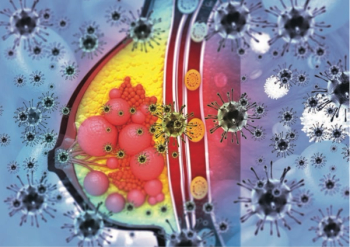
Final Results of the KRISTINE Trial in HER2-Positive Breast Cancer
This phase III trial tested T-DM1 plus pertuzumab vs chemotherapy and dual HER2 blockade in patients with HER2+ breast cancer.
Treatment for HER2-positive breast cancer with trastuzumab emtansine (T-DM1) plus pertuzumab yielded a higher risk of event-free survival (EFS) events compared with trastuzumab, pertuzumab, and chemotherapy, according to a phase III trial. There was a similar risk of invasive disease–free survival (IDFS) events, though, suggesting that chemotherapy may be unnecessary in some patients.
The standard of care for HER2-positive breast cancer is chemotherapy along with dual HER2 blockade with trastuzumab and pertuzumab, which offers pathologic complete response (pCR) rates ranging from 46% to 62%. “Despite the good outcomes we have with dual HER2 blockade in the neoadjuvant setting, 15% of patients will relapse or die” within 3 to 5 years, and systemic chemotherapy is associated with systemic toxicity, said
T-DM1 is an antibody-drug conjugate consisting of HER2-targeted cytotoxic chemotherapy along with trastuzumab; combining it with pertuzumab could improve the toxicity profile of combination regimens. Hurvitz presented the final results of the phase III KRISTINE trial at the 2019 American Society of Clinical Oncology (ASCO) Annual Meeting (
The study included 444 patients, and patients were followed for a median of approximately 37 months. The 3-year EFS rate was 94.2% with trastuzumab, chemotherapy, and pertuzumab, compared with 85.3% with T-DM1 and pertuzumab, for a hazard ratio (HR) of 2.61 (95% CI, 1.36–4.98). This was primarily driven by an increased number of locoregional recurrences, with 15 in the T-DM1 group compared with none in the chemotherapy group.
Fourteen of those with locoregional progression were evaluable for HER2 mRNA expression, and all 14 had expression below the median, compared with 47.1% of those without locoregional progression.
The 3-year IDFS rates were 92.0% with chemotherapy and 93.0% with T-DM1, for an HR of 1.11 (95% CI, 0.52–2.40).
Serious adverse events were more frequent with chemotherapy, occurring in 32.4% of patients compared with 13.5% of patients receiving T-DM1. Adverse events leading to discontinuation of any study drug, however, were more common with T-DM1, in 20.2% of patients compared with 11.0% of chemotherapy patients. Hurvitz noted that patient-reported outcomes including global health status favored the T-DM1 group during neoadjuvant treatment, but no differences were seen during adjuvant therapy.
“The similar risk of an IDFS event with T-DM1 plus pertuzumab and [trastuzumab, chemotherapy, and pertuzumab] suggests that systemic chemotherapy might be unnecessary for some patients, but of course identification of these patients is going to be critical in determining who can have a de-escalation approach,” Hurvitz concluded.
Newsletter
Stay up to date on recent advances in the multidisciplinary approach to cancer.

















































































